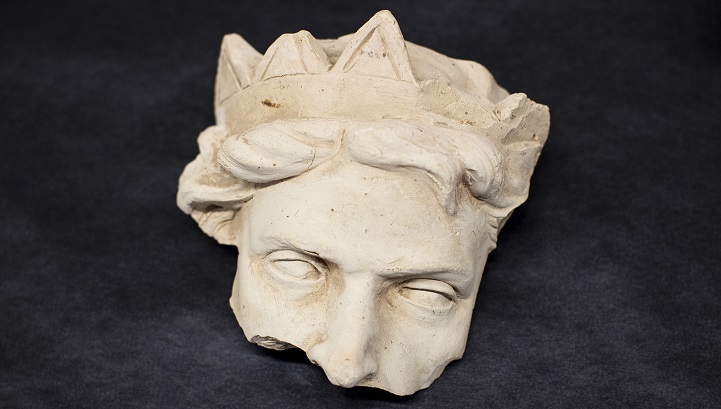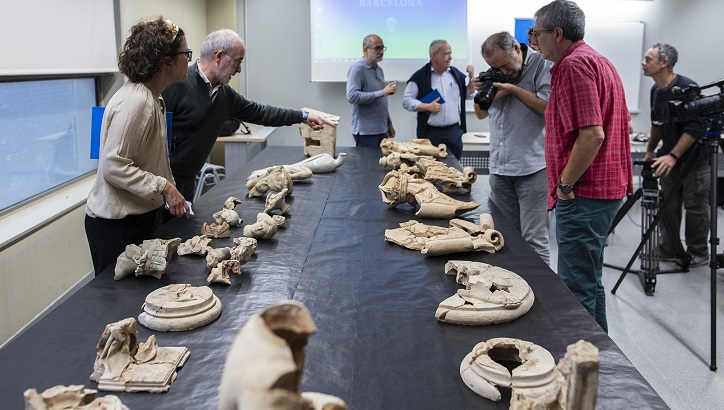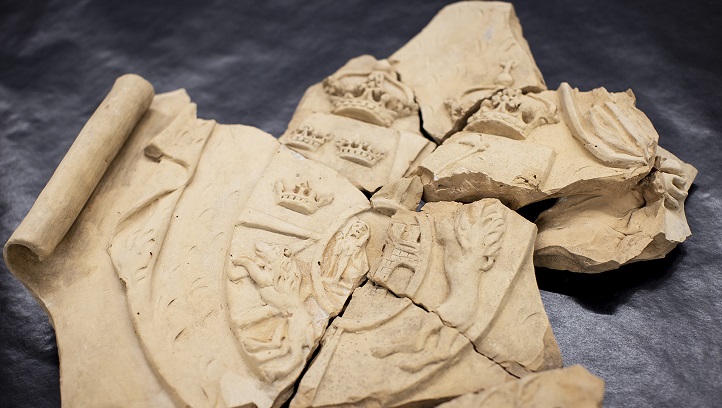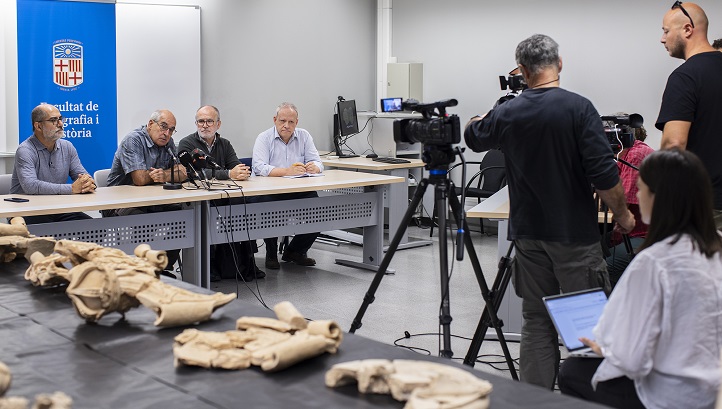Hundreds of archaeological artefacts from pre-modernisme Barcelona found in the former workshop of the potter Antoni Tarrés

Nineteenth-century Barcelona was a city in expansion, enlarging buildings and building new streets in the Raval and Gothic quarters, at a time when the Eixample was just a project. The main material used in this urban growth was terracotta-type ceramics, which replaced stone. Although the workshops where this terracotta was produced were a growing industry, today only the archaeological remains of one workshop remain: that of the potter Antoni Tarrés, which the University of Barcelona has been excavating and documenting for the last ten years. This year's campaign has exhibited hundreds of ornamental pieces made in collaboration with sculptors such as Josep Anicet Santigosa.

Nineteenth-century Barcelona was a city in expansion, enlarging buildings and building new streets in the Raval and Gothic quarters, at a time when the Eixample was just a project. The main material used in this urban growth was terracotta-type ceramics, which replaced stone. Although the workshops where this terracotta was produced were a growing industry, today only the archaeological remains of one workshop remain: that of the potter Antoni Tarrés, which the University of Barcelona has been excavating and documenting for the last ten years. This year's campaign has exhibited hundreds of ornamental pieces made in collaboration with sculptors such as Josep Anicet Santigosa.
Although sculptural pieces were already found in the first year of the excavations, for the last eight seasons the material they recovered has been basically functional and constructive in nature: decorative garden pieces, planters, and elements such as balustrades, tiles, or pipes. This year, however, sculptural objects for decorating dwellings have once again been found. This is the case of sculptures of female figures, including an allegory of Europe, and male figures, such as a head representing America. They have also brought to light many pieces that were probably intended for gardens, such as the sculpture of a triton and decorative pieces for fountains. Similarly, several small busts of figures with Asian features have been recovered, "which reflect the taste for exoticism at the time", according to Josep Maria Gurt, emeritus professor of archaeology at the University of Barcelona. A reproduction of a house has even been found, which was probably used as part of a nativity scene.
Five large heraldic coats of arms of the unified royal houses of Sweden and Norway, the Bonaparte family, the Ottoman Empire, the House of Savoy and the Russian tsars are a highlight. “They probably date from the 1860s and 1870s and were made for an event organized by the Spanish monarchy”, notes Salvador Garcia, honorary professor at the UB Faculty of Fine Arts and an expert on Antoni Tarrés.
"The study of the material found this year can greatly expand the known repertoire of Tarrés and demonstrate his participation in even more buildings than those attributed to him so far", he concludes. To date, up to sixty works by Tarrés have been identified in various buildings in Barcelona.
A little-known period of the architecture in Barcelona
The archaeological remains are located in the Raval quarter; in fact, the workshop of the ceramist Tarrés is located on the site of the same Faculty of Geography and History of the UB. Josep Maria Gurt explains that it is a point of reference to learn about the architecture of Barcelona "in a period of expansion, in which industrialists like Tarrés worked together with sculptors". Jacinto Sánchez, director of the archaeological excavations, recalls that the municipal authorities of the 19th century established that the height of buildings could be increased "with facades of good architectural taste and rich ornamentation". These regulations marked the production of industrialists such as Tarrés and led to joint work with sculptors such as Santigosa. The collaboration between the two began in 1841 and lasted several decades.
Catalan Modernisme marked the decline in the use of terracotta. This material, with its characteristic reddish-to-ochre colour, was replaced by glazed and multicoloured painted ceramics. The Tarrés factory basically illustrates this pre-modernisme Barcelona, a period little studied in the history of architecture and town planning.
The excavations at the site are possible thanks to an agreement between the University and the Barcelona City Council, owner of the site.
Multimedia gallery

Media presentation of the archaeological finds.

Five large heraldic coats of arms of royal houses are a highlight.

